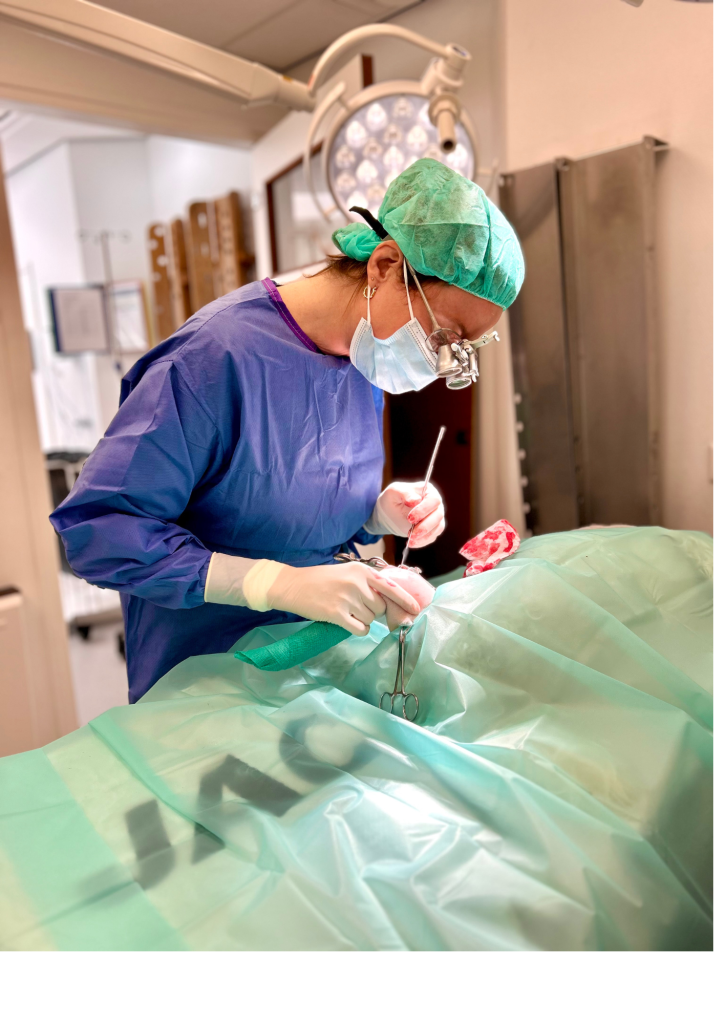Arthritis and Osteoarthritis in Cats
What is osteoarthritis in cats?
Osteoarthritis is the degeneration of the cartilage layer in the joints. It is widely known that this condition is common in dogs. What is less well known is that it also occurs frequently in cats. Recent research shows that as many as 90% of cats over the age of 12 suffer from this joint disease. Because cats are very good at hiding their pain, many people assume that the symptoms are simply part of the normal aging process.
What is arthritis in cats?
Arthritis and osteoarthritis are sometimes used interchangeably, but they are in fact quite different. Arthritis is not caused by wear and tear, but by inflammation of the joint. Osteoarthritis and arthritis are therefore two distinct conditions, although one can develop into the other. This overlap can sometimes make the use of these terms confusing.
What causes osteoarthritis and arthritis?
The greatest risk factor for developing either condition is age. The older your cat gets, the higher the likelihood that he or she will be affected. In other species, excess weight has been shown to increase the risk of osteoarthritis, but in cats this has (so far) not been scientifically proven.
What are the symptoms of osteoarthritis and arthritis?
Recognizing arthritis in cats can sometimes be quite challenging. You may not notice it in the way they move. However, most cats will adjust their behavior and lifestyle due to pain. Watch out for the following signs:
- No longer jumping, or using a step or stool instead
- Stiff movement
- Difficulty climbing stairs
- Sleeping or resting more than usual
- Playing or hunting less
- Trouble using the litter box, sometimes resulting in urinating or defecating outside the box
- Grooming less
- Longer nails
- Excessive grooming in areas where they experience pain
- Withdrawing from interaction
How do we diagnose osteoarthritis and arthritis?
Sometimes, a physical examination can already provide clues that your cat may have osteoarthritis or arthritis. For example, we may notice painful areas in the back or joints, such as the knees and elbows. The joints may also appear enlarged or very stiff. However, if we do not detect these signs, it does not necessarily mean your cat is not experiencing discomfort or pain.
X-rays can sometimes reveal changes in your cat’s joints that are consistent with (osteo)arthritis.
How is osteoarthritis/arthritis treated?
Treatment for osteoarthritis and arthritis consists of three main components:
- Adjusting your cat’s environment and behavior
- Modifying the diet
- Pain relief and anti-inflammatory medication
1) Adjusting your cat’s environment and behavior
- Provide plenty of steps or ramps so your cat doesn’t have to jump too much to reach the litter box or favorite sleeping spots.
- Offer a soft bed or a cozy blanket.
- Make sure water bowls, food bowls, and the litter box are easily accessible:
- Do not place the water bowl next to the food bowl, and ideally have several water bowls around the house. Cats prefer shallow, wide bowls so their whiskers don’t touch the sides.
- The litter box should be large enough, preferably with a low entry and no lid or flap.
- Play actively with your cat at least 3 times a day for a few minutes each session.
- Spend time petting around the head and brushing your cat. This releases endorphins, helping your cat feel better and cope more effectively with chronic stress.
2) Modifying the diet
Omega-3 Fatty Acids
Omega-3 fatty acids are known to help maintain joint function. We therefore recommend Hill’s J/D (Joint Diet), which is now also available in combination with a kidney diet. This diet contains high concentrations of Omega-3 fatty acids. It also includes glucosamine and chondroitin, which are building blocks of cartilage. These substances may also have a pain-relieving effect. Keep in mind that it can take 6–8 weeks before you notice any improvement after changing your cat’s diet. Alternatively, you can give a separate supplement that contains the correct amount of Omega-3 fatty acids, such as Catoils® Omega-3 Joint.
Glucosamine and Chondroitin
Glucosamine and chondroitin are building blocks for cartilage. They are thought to help reduce cartilage breakdown in joints affected by osteoarthritis and may also have a pain-relieving effect. However, strong scientific evidence is still limited.
These products are often available as supplements. There are no exact dosage guidelines, but we recommend using products produced specifically for the veterinary market (e.g., Flexadin Plus®) and avoiding supplements from health stores or supermarkets.
3) Pain Relief and Anti-Inflammatory Medication
Cats with osteoarthritis do experience pain, which makes pain management very important. Our preferred choice is meloxicam (Metacam®), which works both as a pain reliever and an anti-inflammatory. Metacam® should be given once daily with a small amount of food or after a meal. It is a very palatable liquid for cats and is safe for long-term use.
We always aim to use the lowest effective dose. In some cases, giving it every other day may be sufficient. If Metacam® alone does not provide enough pain relief, additional pain medications can be prescribed.
A relatively new treatment (2021) for osteoarthritis pain in cats is Solensia®. Solensia contains an antibody that specifically targets the protein NGF (Nerve Growth Factor). NGF is responsible for transmitting pain signals from the joints to the brain. By blocking NGF, pain is reduced and mobility improves. Solensia is administered via a subcutaneous injection and its effect lasts for one month.
Alternative therapies
Nowadays, many alternative therapies are offered to help relieve your cat’s pain, such as physiotherapy, massage, and sometimes even hydrotherapy.
Chronic pain checklist
If one or more of the following signs apply to your cat, it may be experiencing chronic pain:
- Less active
- Less agile
- Urinates or defecates outside the litter box more often
- Less playful
- More aggressive
- Hesitates when jumping
- Sleepier than usual
- Less affectionate, less likely to sit on your lap
- Grooming the coat less
- Scratches less on the scratching post
Prognosis
If joint changes are already present in the bones, unfortunately, they cannot be reversed. However, by using the medications mentioned above and making adjustments to your cat’s environment, we can help your cat live a comfortable and pain-free life.
When is euthanasia necessary for osteoarthritis/arthritis?
As we mentioned in the prognosis, it is possible for your cat to have a comfortable and pain-free life despite osteoarthritis or arthritis. In some cases, euthanasia may be discussed. Our recommendation depends on several factors. The main reason is when your cat is experiencing so much pain that there is little to no quality of life left, and no further treatments are effective.
If you have any questions about this topic, please contact us or make an appointment directly online.

Orthopedics
De Dierenkliniek offers a variety of treatments within orthopedics. Read more about them here!

